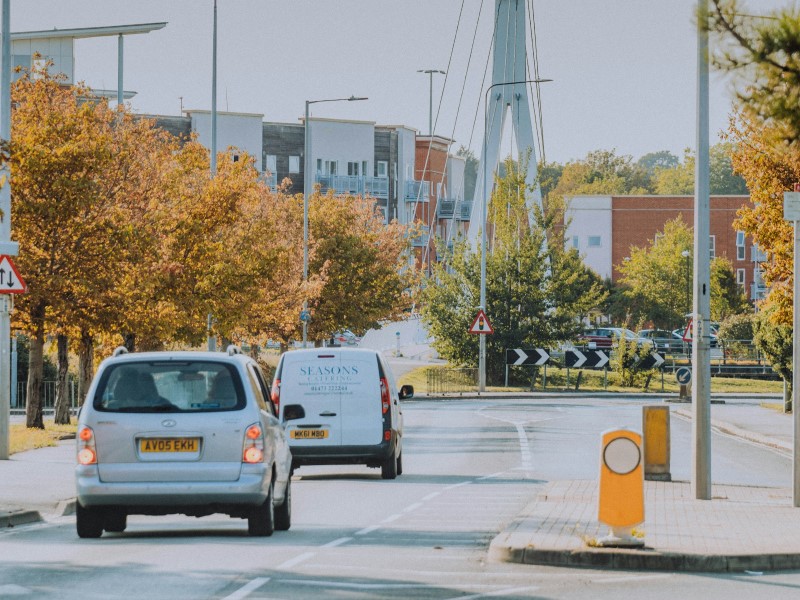Road accidents are the eighth largest cause of death globally, with over 1,500 people dying in road accidents in the UK in 2020. Road accidents are estimated to cost as much as 1.5% of the country’s GDP (and 3% worldwide), but research pays very little attention to these causes of death.
A few studies show a socioeconomic gradient, with death rates in road accidents higher for people with lower levels of education, for example, but there is little data available which matches socioeconomic with vehicle safety data to help us explore this further. Safety features in cars are introduced all the time, but if there is inequality in who owns safer vehicles, that could mean that even when the risk of death or injury from road accidents is falling, inequality in road accident risks may increase.
The data
We linked administrative data from DVLA (the UK government’s Driver and Vehicle Licensing Agency) with Understanding Society to explore income-related inequalities in ownership of safer cars in the UK.
We considered household income across Waves 1-5 of Understanding Society, and focused on eight car safety features, including airbags, anti-lock brakes, and Electronic Stability Control (which helps to avoid skidding).
We also looked at the price and age of the car(s) as well as their mechanical reliability scores, and took into account other factors which might influence cars’ choice, such as education level, personality traits, and willingness to take risks of the household members. We also factored in other data on whether the household’s car is in one of the top 10 brands for mechanical reliability.
Our results
There were clear inequalities in car safety, with better-off people owning cars with more active and passive safety features. Further analysis shows that the main driving forces of the observed concentration of safer cars among those who are better-off is the car’s price and year of manufacture. This makes obvious sense, suggesting that the most advanced safety features are in the newest and most expensive cars.
Other factors such as the demographic composition of the household, risk aversion attitudes, personality characterises, cognitive ability, and education of the household members were less important on explain the observed pro-rich inequalities in ownership of safer cars.
We tested our results by examining safety features that come as standard and those which are optional extras, which people pay for as additions to the standard models’ equipment. This did not change the results – car price and year of manufacture were still the main contributors to inequalities in ownership of safer cars.
What the results mean
As far as we know, our study is the first to directly measure these inequalities. Previous research has shown that lower access to safer vehicles was probably the reason for socioeconomic inequalities in traffic accident mortality rates
Our results show that safer cars are concentrated among the better off – but this comes with an important implication: it suggests that cars with fewer safety features may be considered inferior goods.
The inequalities we found were almost completely explained by car price and year of manufacture – that is, more expensive and modern cars have the most advanced safety features, and these cars are concentrated among the better off. Household-level characteristics such as demographics, education, and personality traits are less important. Although some existing research shows that the age composition of the household, household composition, and personality are linked to people’s choice of car, these factors don’t play a major role in explaining the observed income-related inequalities in safer car ownership.
The lack of influence for education is interesting. Educational attainment is a significant factor in the socioeconomic gradient in healthy behaviours and lifestyle choices such as smoking, obesity, and exercise. Education may lead to more accurate health knowledge, better skills, and higher take-up of health campaigns and interventions which may result in healthier habits. However, our study suggests that household with members of higher levels of education don’t choose cars by their safety features..
Policy implications
If the price and age of the car explain the concentration of safer cars among the better off, it suggests that continuing to regulate minimum safety standards for new vehicles is the right thing to do. The European Union, for example, has recently set minimum safety standards which apply to new vehicle types from July 2022 and to all new vehicles from July 2024.
New policies could help, too. The inequalities we’ve found in this research may exacerbate the existing socioeconomic gradient in road traffic injury and mortality rates, and subsidies for safer cars for more disadvantaged buyers, for example, could mitigate the relatively higher costs of newer, safer cars.
Authors

Vincenzo Carrieri
Vincenzo Carrieri is a Professor of Public Economics at the University of Calabria, Researcher at RWI Essen and IZA research fellow

Apostolos Davillas
Apostolos Davillas is an Assistant Professor in the Department of Economics at the University of Macedonia in Greece, Research Affiliate at IZA, Bonn, Research Fellow at GLO and Research Fellow at RWI Essen

Victor Hugo de Oliveira
Victor Hugo de Oliveira is a public policy analyst at IPECE (Instituto de Pesquisa e Estratégia Econômica do Ceará) in Brazil




